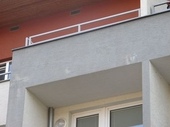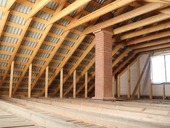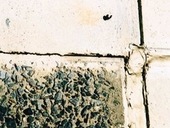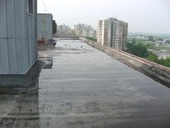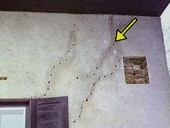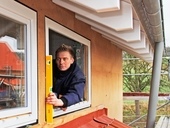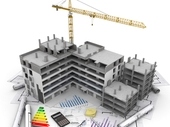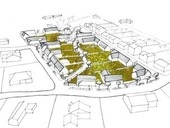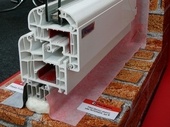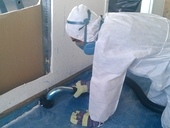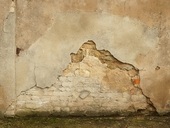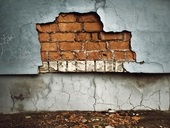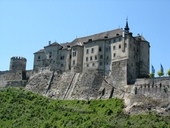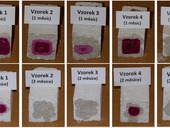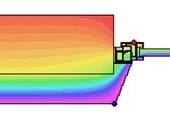During the reconstruction works of residential houses the associations of housing unit owners have to make decisions according to their financial means. It often arises a situation when windows are changed and facades of residential floors are insulated by a thermal insulation. Skirting part of the building and the roof is often in seclusion interests. Subsequent roof insulation therefore brings a number of design and implementation issues. This paper describes the necessary structural modifications of the existing double-deck roof structure (i. e. cold deck roof) to single-deck flat roof (i. e. warm deck roof) and increased financial costs caused by successive structural modifications made without consideration of the follow-up.
Archiv článků od 14.10.2013 do 30.6.2014
Currently, we increasingly need to carry out construction modifications on objects which in view of their age could be basically considered as new-build buildings at which we did not expect such a requirement. In most cases these construction modifications are caused by failures or defects of roofs, especially operation roofs – terraces. The cause of failure is often a combination of several factors. The primary source of error may be already a design project and roofing solution and quality of realization of each roof layer and roof details or unsuitable climatic conditions during the implementation. A separate issue could be the problem of the poor quality of used materials. By interaction of these negative effects then surprisingly arise failures at objects which were realized a few years ago.
The contribution deals with particular causes of excessive damp of wooden constructions in objects of the civil engineering. It concerns for instance the matter of water condensation on the surface of wooden elements and on the inside of constructions that contain wooden elements, of incorrect construction design, of constructions with wooden elements and leaking water in places wth wooden elements.
Failures occurring on the facades of assembly houses often arise due to volume changes sunlit walls and incorrectly made contact details between panels. Sometimes it is not enough to eliminate them or repeated repair of damaged joints. Therefore is no choice of other solution than to overlap these joints with thermal insulation system. One such case is the subject of this paper.
By flat roof reconstruction of panel apartment houses we meet quirements for hygiene, health, inerior environment, thermal protection and energy consuption. This paper deal with these problems. There are also mentioned actual conditions of flat roofs and principles of their reconstruction. Moreover paper contains example of wrong reconstruction of panel house.
New Civil Code enacts special type of solidary obligation to remedy the defects of building constructed under contract for works. All subcontractors (suppliers) of constructor, investor`s technical supervisors or construction project designer are solidary responsible together with the constructor in case the defect can be attributed to the performance they provided. However, these parties need not to be the parties to the contract for works itself (and usually are not) as their obligation arises by law.
The remedies that the investor can claim on these co-debtors, however, are limited to right to demand the repair of the defect. Investor may demand remedy on any of the co-debtors and all the co-debtors are obliged to perform the remedy in full.
The investor has to give notice to the debtor within a reasonable time. The notice can be sent to any of the co-debtors but we advise all investors to give notice always to the constructor first or together with the other co-debtors.
The thesis deals with urban sprawl and suburbanization as the effects of changes in society. It presents the basic historical overview and describes the situation in contemporary Europe. The thesis focuses on description of negative aspects, in connection with formed urban sprawl.
This work presents and describes the historical background of suburbanization in the Czech Republic. It reflects on the causes and presents the facts, leading to their understanding.
The practical part of the thesis is the application of acquired knowledge on the model, which is Brno-Útěchov. One of the peripheral parts of Brno that has grown significantly due to suburbanization in last few years.
Ideological study aims to show an alternative approach to this way of development. The main areas of interest are importance of public and private space, often neglected idea of neighborhood and the importance of privacy in terms of new houses in a face of village itself.
Asbestos is often mentioned in connection with the construction industry, especially with the school buildings. Wrong way of asbestos removal meant a multimillion cost of cleaning the property. Unfortunately, these cases do not cause a change in legislation that would regulate working with asbestos.
Moisture in most of buildings can be limited by different methods. Problems are divided into two papers. The author analyses the conditions of moisture-spread in building in the first part of paper and he solves the selection of sanitation method with less frequent technology of realization. The specific cause with utilization of air insulation system is presented in this part.
The article deals with a new product in the Czech market that is quickly getting to awareness of potential clients and gaining a significant place in the local real-estate market. Until recently, the inspection of immovable properties was an unknown concept. Nevertheless, in recent two years such assistance service is being more and more popular. Pertinent specialised inspection companies assist the real property buyer in eliminating potential risks that are related to selection and purchase of a given building. A competent certified inspector checks up to about 200 items of the building and compiles an expert report to help the client to correctly decide whether he should buy the given building or not. The inspector will acquaint the client with a real purchase price, precisely describe all the defects and how to correct them, and finally, he will hand over to the client a complete budget to cover the cost of necessary repairs.
In 2013 the inspection of real properties comes to one of the fastest growing segments of Czech economy. The people intending to buy any real property are more cautious and, now at the time of an economic uncertainty, they begin using the above relatively new assistance service in a large extent.
Moisture in moist buildings can be limited by the most different methods. Problems are divided into two papers. The author of paper analyses the conditions of moisture-spread in building in the first part of paper and he solves the selection of sanitation method with less frequent technology of realization. The concrete cause with utilization of air – insulation system then will present in the second part.
The paper contains basic information on the relationship between the contractor and the client as introduced by the new Civil Code. Firstly, it points to a fundamental difference in the concept of ownership of land and buildings which will not be, unlike the current state, separate. Yet the law allows exceptions to this rule, which are briefly explained in the article.
The main part of the text deals with the issue that is most pressing in construction of buildings. It is the responsibility for the quality of the work or project documentation. The paper deals with the obligation of a client to accept work in stages, addressing liability for latent defects, acceptance of the finished with reservation of latent defects and etc. In this context it should not be overlooked, that the general liable for defective work are together the contractor, subcontractors, maker of the documentation and construction supervisor. These entities may waive liability only if they demonstrate that they did not cause the defect themselves.
The article describes Castle Czech Šternberk and location NKP Castle Czech Šternberk, current condition of the property, the current state government Castle Providing guides, souvenirs sourcing, arranging catering, rent parts of the castle, SW Support Facility management at the castle, SWOT analysis Castle Czech Šternberk a description of the weaknesses of the castle.
Application of the burning lime for masonry is known from the eldest ages. In history was empirically discovered, the properties of lime putties and mortars made from it can be modified adding various additives. Inorganic additives with latent hydraulic activity (natural pozzolana, thermal modified rocks) or organic additives (proteins, carbohydrates, organic acids as fruit juices etc.) were used. Beneficial influences of some additives were proven by contemporary science. Application of other additives seemed irrational from present point of view. The aim of this work was determined the influence of some historical additives on lime putties and mortar properties.
The weakest part of concrete high-rise block are their envelopes, so most of regenerations are dealing with reconstruction of existing envelopes. It related of the replacement of window openings, the installation of additional contact thermal insulation or modifications of projecting structures, including loggia glazing and, last but not least, changes in the colour shading of the surface façade layer. These adjustments can improve energy efficiency of the building, but secondary negative effects on the interior environment in terms of the daylight level must also be considered. In this study we tried to take account of both width and shape of jamb of the window with taking into account the effect daylight inside the room.
zpět na aktuální články

